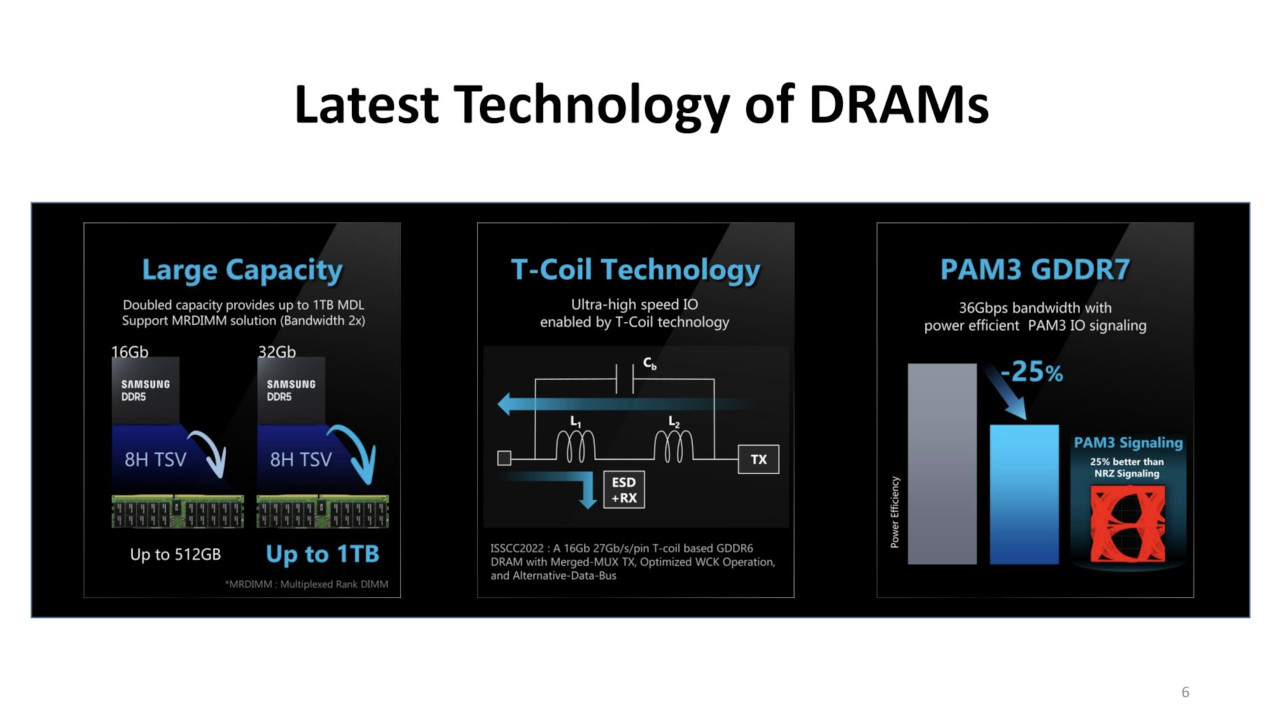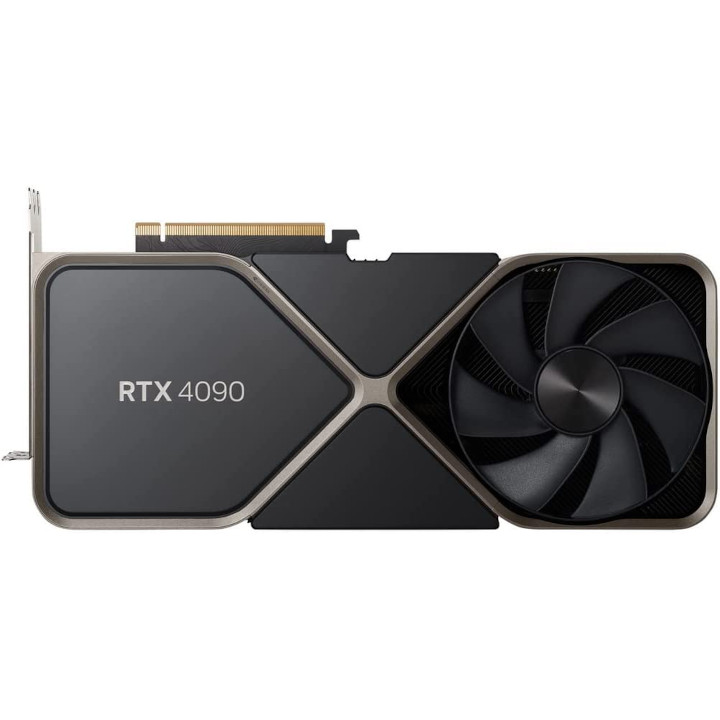What you need to know
- Samsung is attending the 68th annual IEDM conference, which runs from December 3 to December 7, 2022.
- They revealed plans to use PAM3 IO signaling to improve power efficiency in next-generation GDDR7 DRAM during a course on high-speed memory for AI and HPC.
- A slide from the short course claims a 25% improvement over NRZ signaling used in GDDR6 but no comparison to PAM4 in GDDR6X.
Speaking at the 2022 IEDM conference (IEEE international electron devices meeting) in San Francisco, Samsung revealed a slide in its presentation on the next generation of DRAM that GDDR7 will use PAM3 IO signaling. While attending the meeting, but not this specific talk, Dr. Ian Cutress shared a slide (via Twitter) demonstrating Samsung’s implied 25% improvement over the NRZ signaling used in GDDR6.
I’m not attending this one, but here’s a fascinating slide. Samsung confirms that GDDR7 uses PAM3 signalling. NRZ is 0 or 1: 1 bit/cycle.PAM3 is -1, 0, 1: 3 bit/2 cycPAM4 is 0, 1, 2, 3. 2 bit/1 cyc80G Thunderbolt will also use PAM3. https://t.co/DJ8GvIDCJi pic.twitter.com/9Yw5zdUzDUDecember 4, 2022
PAM3 (pulse-amplitude modulation) transmits a digital signal via three levels, -1, 0, and 1, representing 0s and 1s of data, allowing for higher data transmission rates than NRZ (non-return-to-zero) signaling found in GDDR6 DRAM using only two levels, 0 and 1. This extra level helps transfer more data at the same speed, with Samsung projecting 36Gb/s bandwidth in GDDR7 DRAM.
GDDR6X memory is in previous-generation graphics cards such as the NVIDIA GeForce RTX 3080 and 3090, which use PAM4 signaling for a maximum bandwidth of around 19-21Gb/s. Although PAM4 technically sends four levels to transmit more data than PAM3, the current implementation method in consumer-grade GPUs doesn’t guarantee better performance.

Still, the advancement in available bandwidth is a big deal for GPU memory, and these upgrades should be available sometime in the future. While PAM3 sounds less enticing than PAM4 for everyday PC users, proper use depends on a balance between effectiveness and cost.
For comparison, the latest NVIDIA GeForce RTX 4090 GPU runs at an effective 21Gb/s, even pushed slightly above by brave enthusiasts overclocking the card. This futuristic tech isn’t aiming for a commercial market yet, and it’ll likely be a long while before we see any consumer-grade graphics cards using GDDR7.

AI-accelerated performance with DLSS 3 and ray-tracing, the RTX 4090 is the absolute top-end performance GPU for PC gaming enthusiasts.




